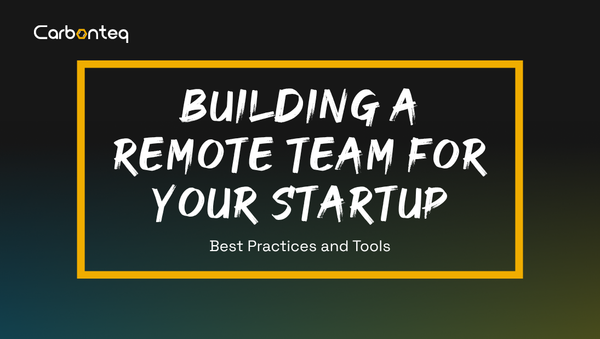Navigating the Agile Paradox; Revealing the Essence of Agile Project Management

Introduction
In the changing realm of project management one approach has stood out from the rest—Agile. Agile project management is a methodology that values flexibility, collaboration and adaptability, over planning and structures. However it's important to recognize that Agile might not be not a solution before embracing it.We'll explore the nuances of Agile, its adaptability, and why it might be the key to maximizing value for your team.
Agiles Versatility; Not Suitable for Every Situation
Picture a hospital adopting the mantra "Move fast. Break things." It's unsettling, right? This illustrates that not every context suits Agile. Businesses are at varying stages, and the decision to adopt Agile should be based on thorough evaluation.
Originally designed for software development, Agile's success in that domain raises a question: Can it be universally applied? The answer is nuanced. While Agile offers immense benefits, its application requires discernment.
Agile isn't just a rulebook; it's a dynamic toolkit rooted in principles. Its power lies in recognizing that while its foundational principles are steadfast, their application can vary. This malleability underscores Agile's enduring relevance, emphasizing agility and customer-focused success.
The Significance of Unlearning
When embarking on a journey unlearning can be just as vital as learning. Unlike methodologies Agile requires not adopting new tactics but also shifting your mindset. Implicit assumptions can hinder progress. Of asking "How do we do Agile?" it's better to start by questioning "Why Agile?" It's important to note that no two companies follow the playbook when practicing Agile; this flexibility is what makes it so adaptable.
Shifting into an Agile Mindset
To fully embrace Agility you must be open to making a mindset shift. This shift entails;
Embracing Change: Teams that welcome change are more likely to thrive with Agile.
Prioritizing Value:Agile shifts the focus from checking off tasks to delivering value to the customer.This customer-centric approach ensures that the end product meets real needs.
Empowering Teams: Agile fosters team autonomy, sparking creativity and ownership.
Continuous Enhancement: Improvement in Agile is ongoing, prompting teams to consistently refine their methods.
Efficiency vs. Value
A common misconception is that Agile is purely about efficiency. While it seeks to optimize value delivery, it focuses on impactful outcomes rather than just task completion. Being overly task-oriented can obscure the broader objective: delivering unparalleled value.
Agile Metrics
Centered on Value Agile's efficiency is about value optimization. Key metrics include:
- Lead Time: The span from idea conception to product delivery. Minimizing this ensures rapid value delivery.
- Cycle Time: The duration a task takes from initiation to completion. Reducing this bolsters responsiveness.
- Customer Satisfaction: A direct reflection of value delivery, gauged through feedback loops.
- Velocity: While it measures work done per iteration, it shouldn't overshadow value delivery.
The Fallacy of Founders
It's a fallacy to believe founders possess infallible knowledge. Analyzing any company at its IPO stage reveals product evolutions. Successful businesses pivot, aligning with Agile's ethos. It's vital to question founder-centric myths and stay receptive to evolution.
Founder Myth in Startups:
In startups, this myth is even more pronounced. While founders have visions, it's essential to realize these can evolve. Rigid adherence can lead to missed growth avenues. Agile's emphasis on continuous evolution resonates with business realities.
Leveraging the Power of Pivots:
Agile's pivot-friendly nature is a hallmark of successful startups. Consider Airbnb, which began as "Air Bed & Breakfast." What started as a makeshift lodging solution during a conference evolved into a multi-billion dollar platform. Their willingness to pivot was instrumental in their success.
The Paradoxical Nature of Agile; A Fundamental Principle
Agile's Inherent Paradox Agile embodies a paradox. It's not a magic fix but demands unwavering commitment to adaptability and enhancement. The Agile Manifesto underscores the value of human interactions over mere tools. This principle captures Agile's true spirit.
Operationalizing the Agile Paradox
Agile's challenge is balancing structure with flexibility. It provides guiding principles, adaptable to specific team needs, emphasizing continuous improvement. It prioritizes:
Individuals and interactions than solely focusing on processes and tools:
It recognizes that people are at the heart of any project so building teams and encouraging collaboration is crucial.
Working software or deliverables, than extensive documentation:
Agile places a value on producing outcomes rather than getting caught up in extensive planning and documentation. However this doesn't mean that documentation is disregarded—it should be proportionate. Fulfill the needs of the project.
Collaboration with customers takes precedence over negotiating contracts:
This approach encourages working with customers and stakeholders throughout the project enabling feedback and adjustments.
Being responsive to change is favored over strictly following a plan:
Embracing change and quickly adapting to change ensures that the project stays aligned with evolving requirements and objectives.
Conclusion
By adopting the mindset and truly grasping Agiles principles you can effectively navigate the ever changing realm of modern project management. As you embark on your journey remember that it's not about achieving perfection; it's about making progress. Agile offers a path towards improvement, adaptability. Ultimately attaining greater success, in delivering value to your customers while accomplishing your projects goals. It is also important to keep in mind that principles outlined in the Agile Manifesto are not set in stone. They can be Interpreted by each team according to their situations.This adaptability is one of the strengths of Agile as it allows it to be effective in contexts.
If you liked our ideas, click on the subscribe button below to get our latest blogs delivered directly to your email.




